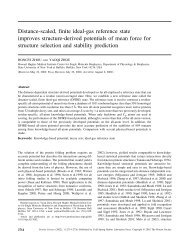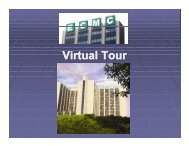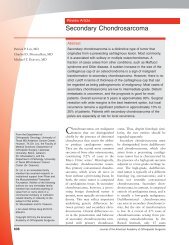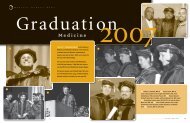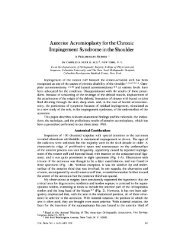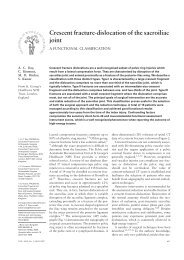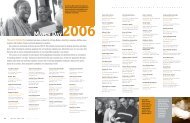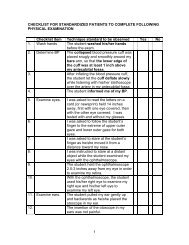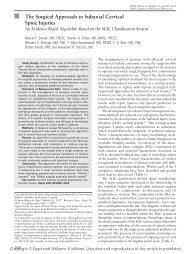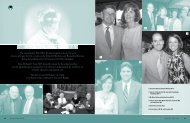Download Residency Training Program PDF - Ross Eye Institute
Download Residency Training Program PDF - Ross Eye Institute
Download Residency Training Program PDF - Ross Eye Institute
Create successful ePaper yourself
Turn your PDF publications into a flip-book with our unique Google optimized e-Paper software.
• The resident will learn the basics of eyelid lesion removal and chalazion<br />
excision<br />
ASSESSMENT—The resident will perform all minor lid lesion and chalazion<br />
excisions in the oculoplastics clinic under the supervision of an attending and<br />
immediate feedback given regarding performance.<br />
Second Year Residents<br />
COGNITIVE:<br />
• The resident, in addition to the above, should be able to understand the<br />
work-up and management of epiphora, including nasolacrimal duct<br />
obstruction, functional obstruction, canalicular and punctal stenosis, and<br />
epiphora due to pump failure.<br />
ASSESSMENT—The resident will be quizzed regarding lacrimal disorders<br />
during the oculoplastics clinic when patient are seen manifesting these<br />
disorders.<br />
• The resident should be familiar with the management of periocular<br />
trauma, including lid lacerations, canalicular lacerations, facial lacerations<br />
and orbital blowout fractures.<br />
ASSESSMENT—During the course of the resident’s rotation, at least three<br />
patients with trauma will be selected, the various anatomic defects discussed<br />
and the management reviewed.<br />
• The resident should become familiar with the various manifestations of<br />
Graves’ orbitopathy both in the eyelids and in the orbit, and understand<br />
the various medical and surgical treatments and their indications<br />
ASSESSMENT—The resident will be required to list the various manifestations<br />
of Graves’ disease and the indications for various treatment options on two<br />
patients with Graves’ disease.<br />
• The resident should be able to clinically recognize various tumors of the<br />
ocular adnexa, specifically basal cell carcinoma, squamous cell carcinoma,<br />
sebaceous cell carcinoma, melanoma, and other skin tumors. The resident<br />
should understand the natural history of these tumors and the various<br />
options of treatment, including the role of Mohs-microsurgery, and frozen<br />
border analysis excision.<br />
ASSESSMENT—When evaluating patients with skin lesions, the resident will<br />
be quizzed on various clinical and pathological characteristics of different<br />
cutaneous tumors, their prognosis, and the management for each.<br />
39




